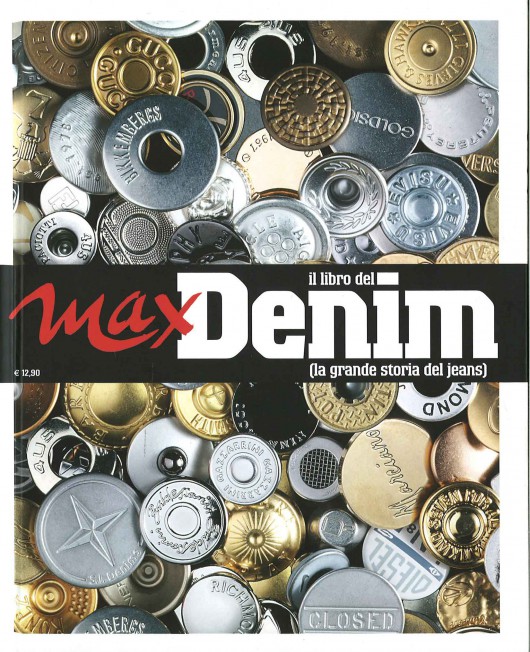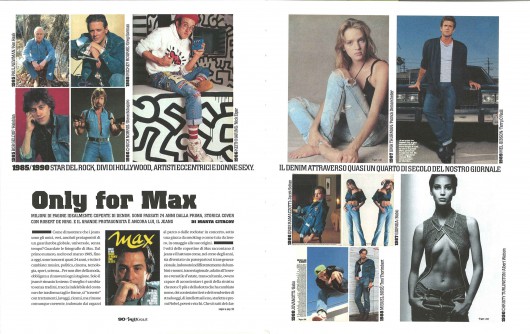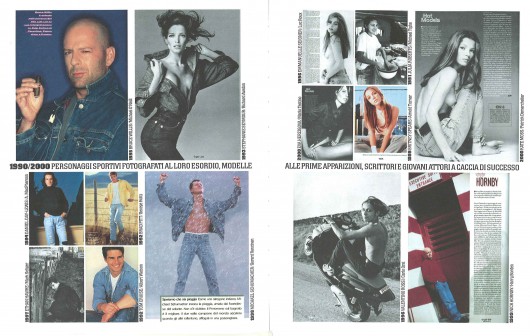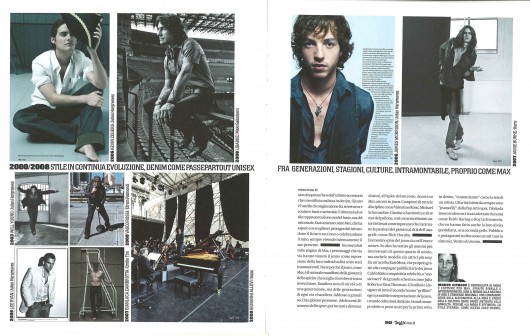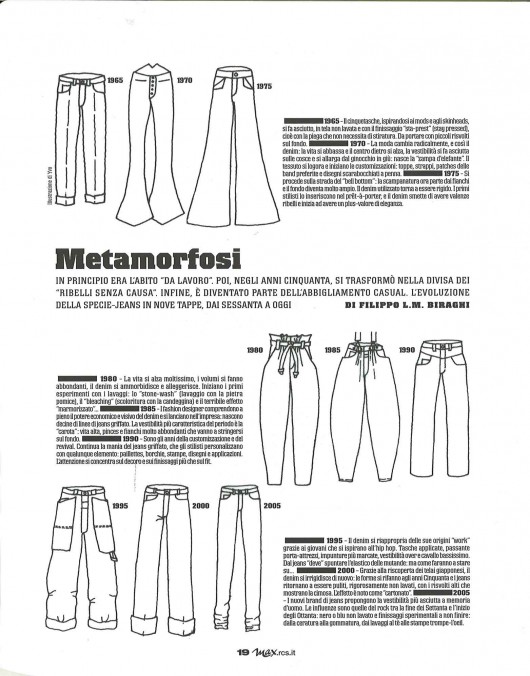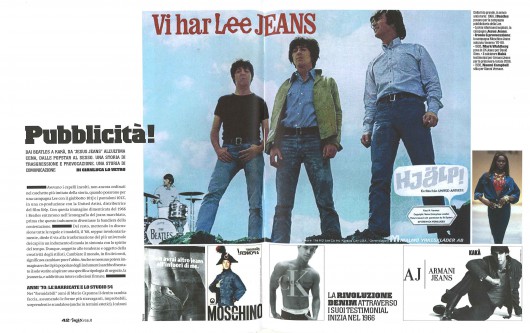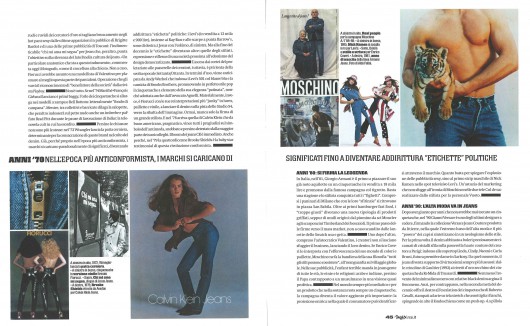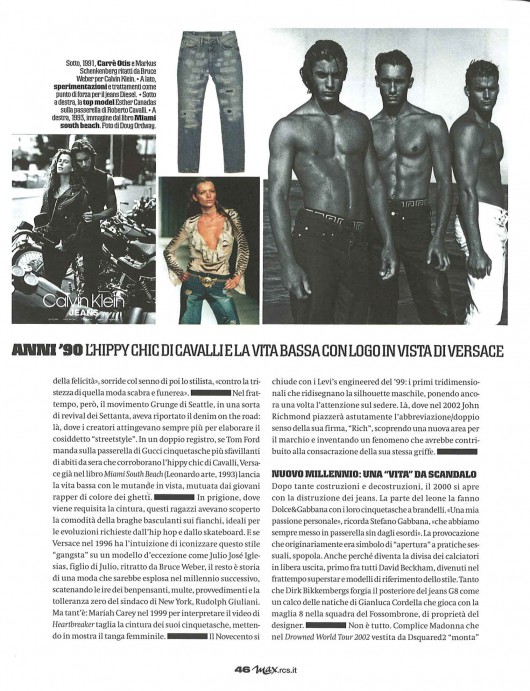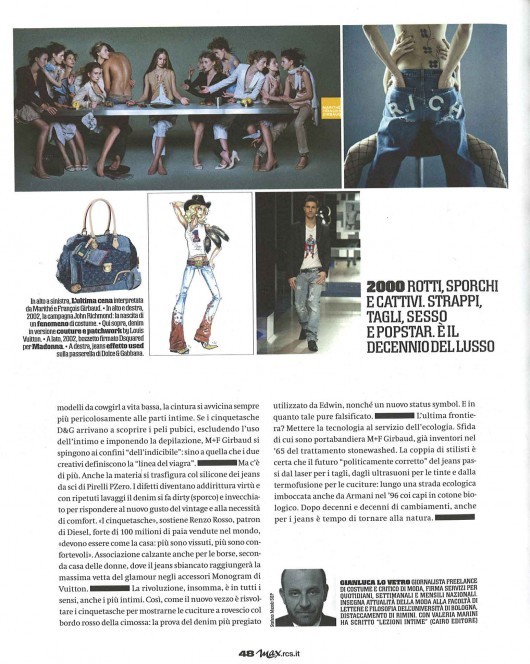THE DENIM BOOK BY MAX 1
JEANS/ voce dell’inglese d’America, da (blue) jeans. Tipo di grossa tela di cotone, molto resistente, quasi sempre blu. Anche aggettivo invariantivo : tela jeans. Pantaloni, di colore diverso dal blu e di tessuto diverso dal cotone, ma tagliati allo stesso modo dei blue jeans. DENIM/ (da de Nimes, città della Francia dove si produceva) Tessuto molto robusto di cotone ritorto, generalmente scuro, usato nello specifico per tute da lavoro, uniformi e simili .Zingarelli a parte, facciamo chiarezza: quello che in origine era il nome del tessuto (jeans) oggi si usa anche per definire un modello di pantalone (il cinque tasche). Il denim, invece, continua ad essere rigorosamente solo il nome di un tessuto. Al di là delle valenze simboliche e stilistiche di cui si è appropriato suo malgrado nel corso del tempo, materia di testi firmati da firme autorevoli, il jeans nasce nel 1860 come tessuto per l’ abbigliamento da lavoro.
Alessandro Calascibetta
JEANS/ American english, from (blue) jeans. An heavy strong twilled kind of cotton, mostly blue. Invariant adjective: jeans. Trousers made of different material from the cotton fabric and in a different shade of blue, but cutted the same way as blue jeans. DENIM/ (From Nimes, french city where it was produced). Very hard wearing twisted cotton fabric generally dark and used for making work uniforms and similars. Besides the dictionary, let’s set this straight. At first “jeans” was just the name of the fabric, nowadays we use that term even to define a kind of trousers, (5 pockets one). The word ”Denim”, instead, it’s still only related the fabric. Altrough all the symbolic and stylistic values that has been attributed to denim in its history, it was created in 1860 as a fabric for making work uniforms.







